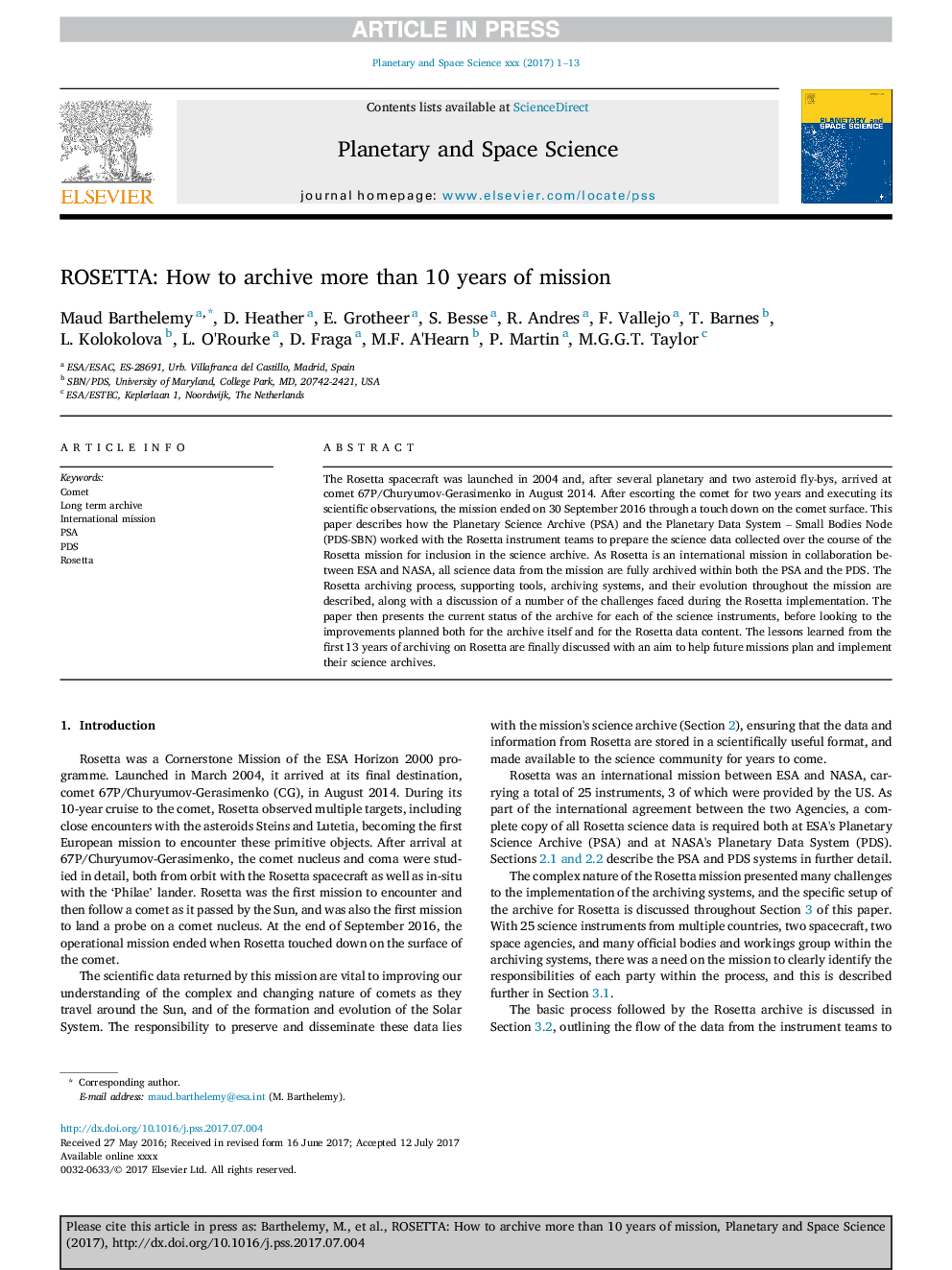| Article ID | Journal | Published Year | Pages | File Type |
|---|---|---|---|---|
| 8142502 | Planetary and Space Science | 2018 | 13 Pages |
Abstract
The Rosetta spacecraft was launched in 2004 and, after several planetary and two asteroid fly-bys, arrived at comet 67P/Churyumov-Gerasimenko in August 2014. After escorting the comet for two years and executing its scientific observations, the mission ended on 30 September 2016 through a touch down on the comet surface. This paper describes how the Planetary Science Archive (PSA) and the Planetary Data System - Small Bodies Node (PDS-SBN) worked with the Rosetta instrument teams to prepare the science data collected over the course of the Rosetta mission for inclusion in the science archive. As Rosetta is an international mission in collaboration between ESA and NASA, all science data from the mission are fully archived within both the PSA and the PDS. The Rosetta archiving process, supporting tools, archiving systems, and their evolution throughout the mission are described, along with a discussion of a number of the challenges faced during the Rosetta implementation. The paper then presents the current status of the archive for each of the science instruments, before looking to the improvements planned both for the archive itself and for the Rosetta data content. The lessons learned from the first 13 years of archiving on Rosetta are finally discussed with an aim to help future missions plan and implement their science archives.
Related Topics
Physical Sciences and Engineering
Earth and Planetary Sciences
Geophysics
Authors
Maud Barthelemy, D. Heather, E. Grotheer, S. Besse, R. Andres, F. Vallejo, T. Barnes, L. Kolokolova, L. O'Rourke, D. Fraga, M.F. A'Hearn, P. Martin, M.G.G.T. Taylor,
